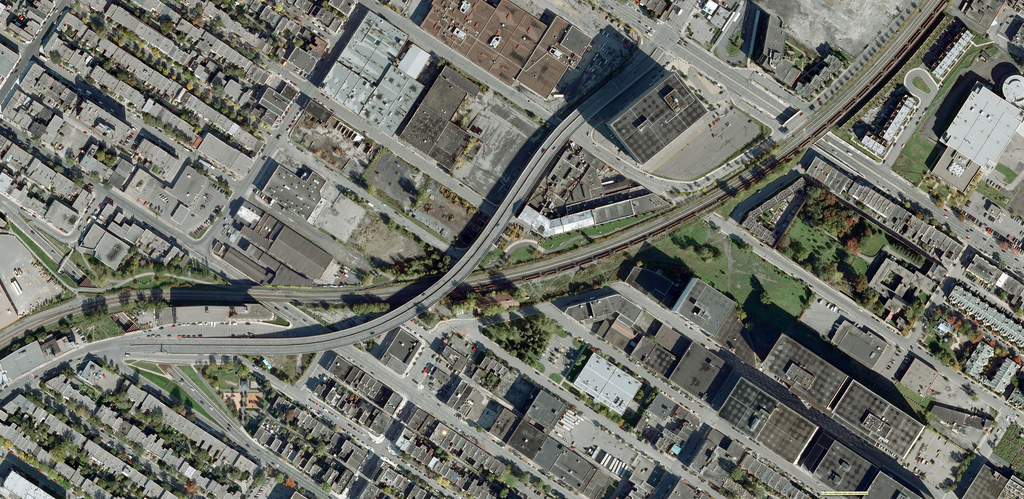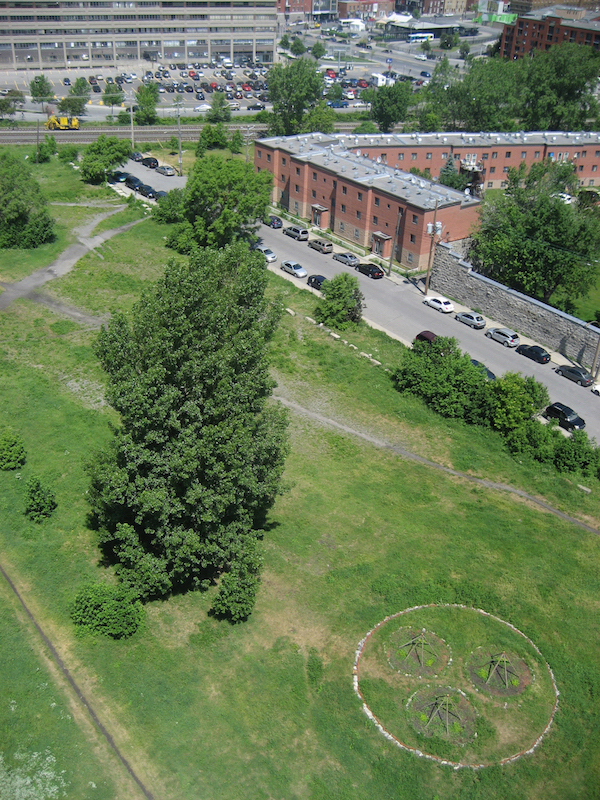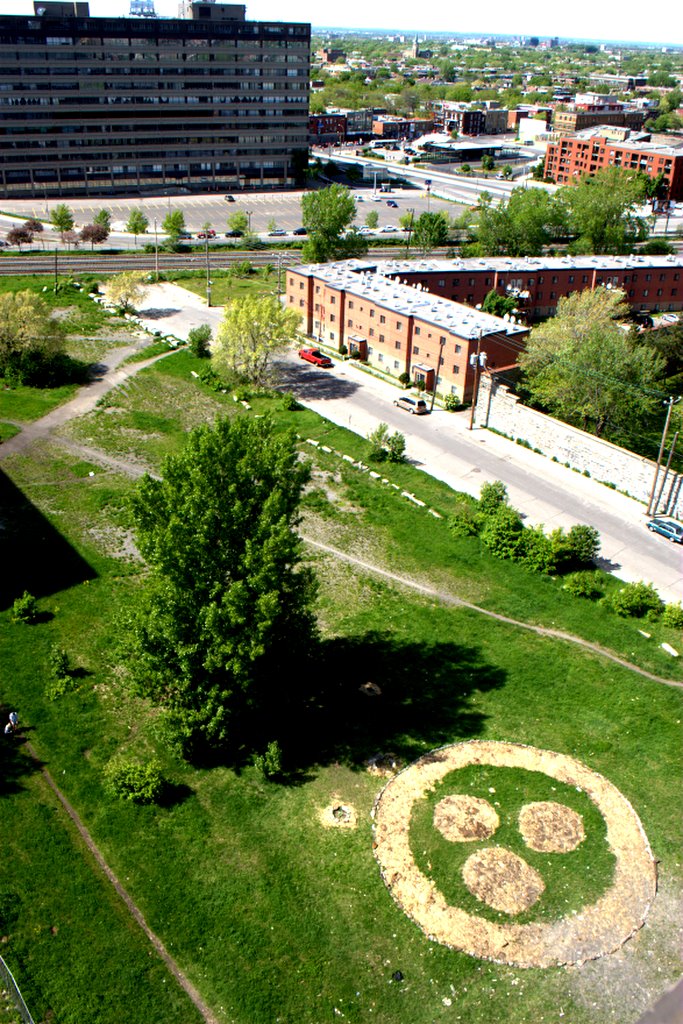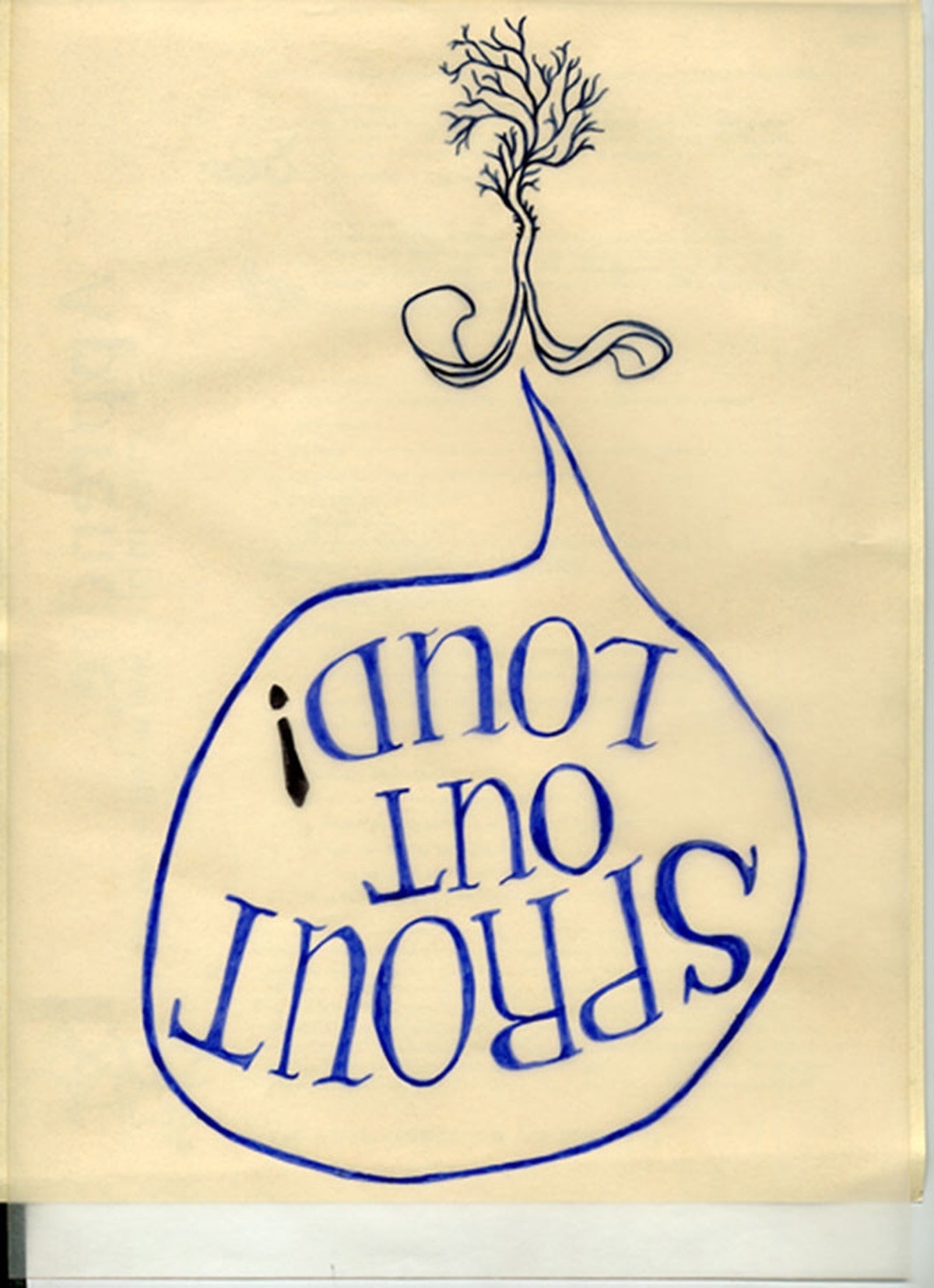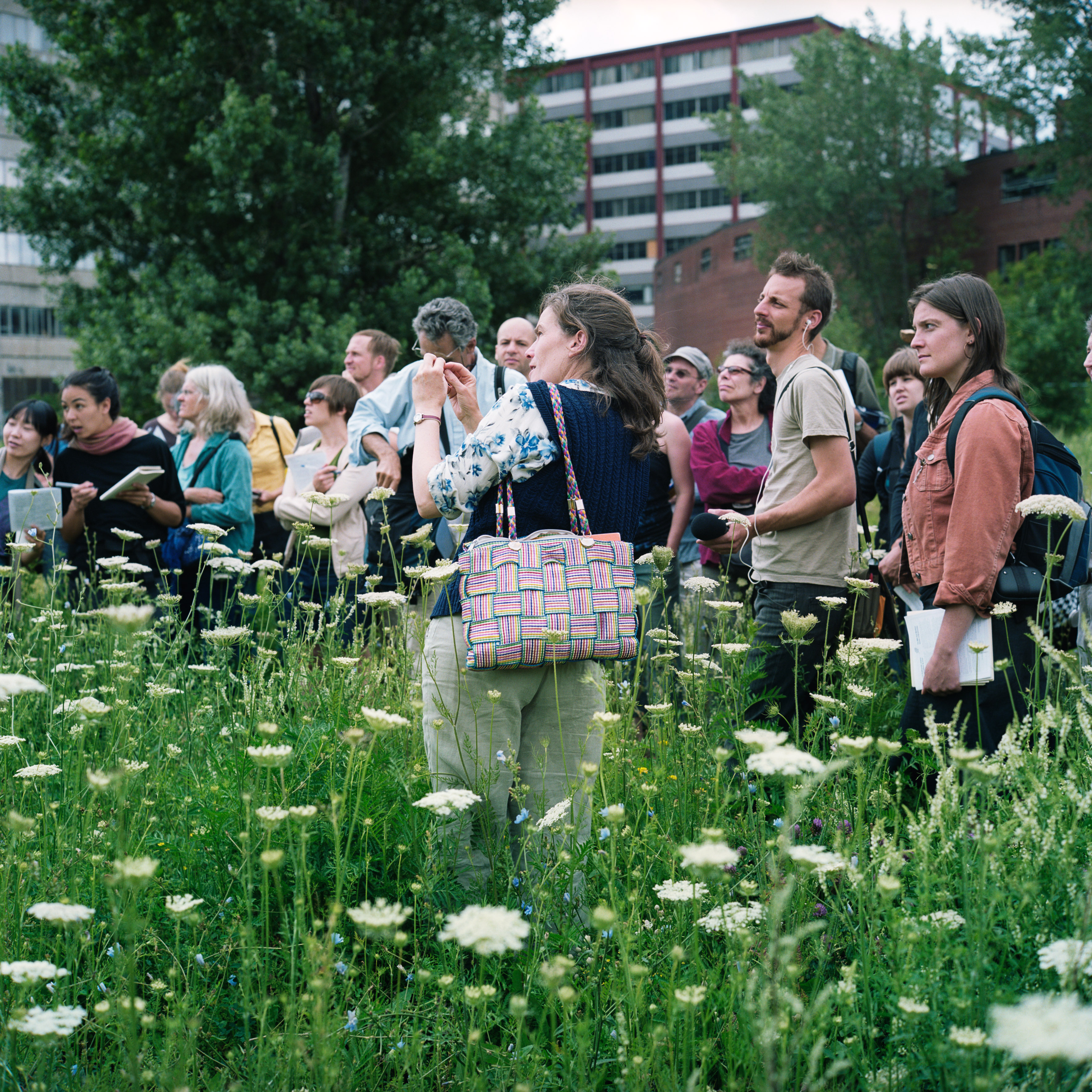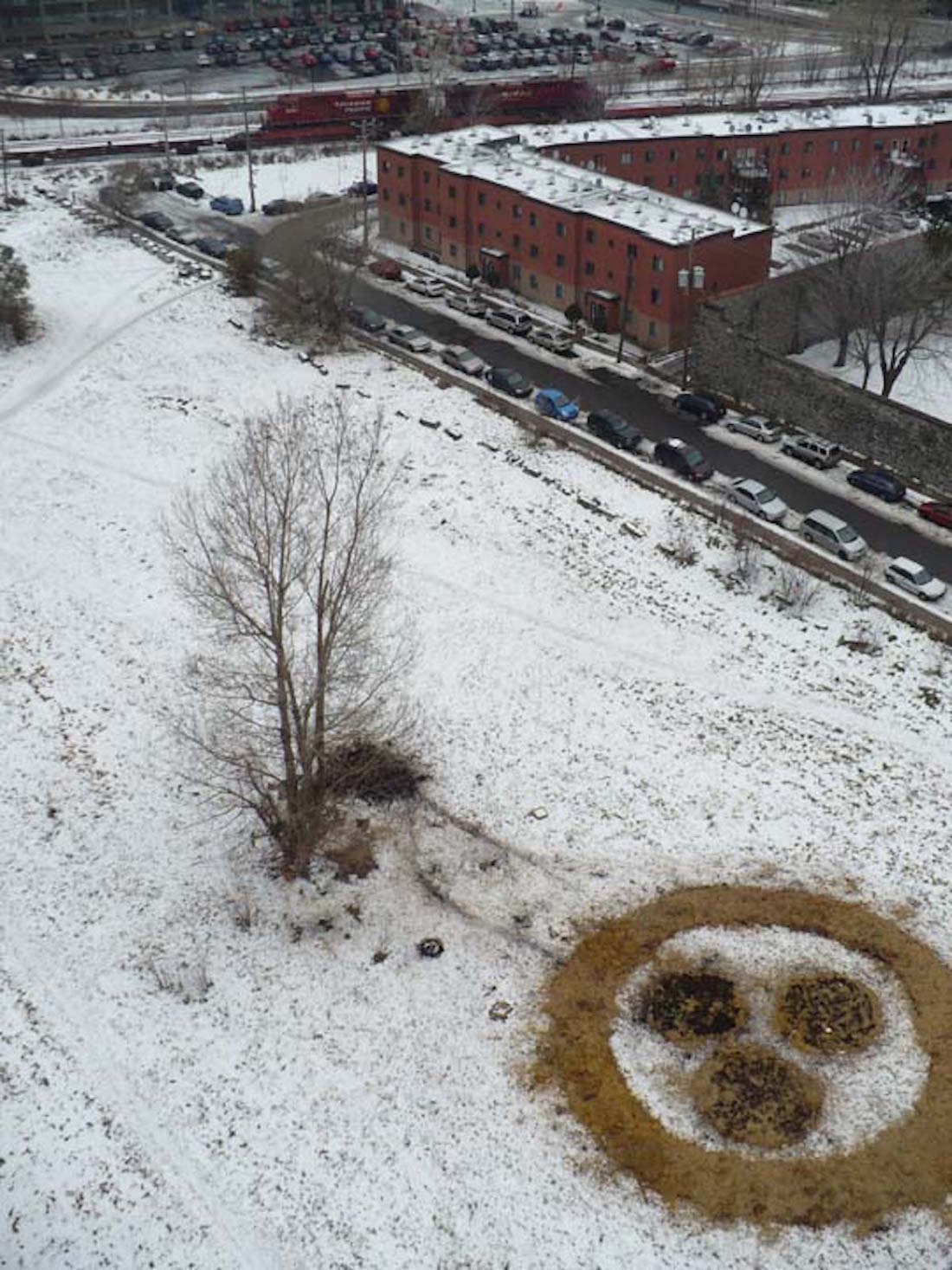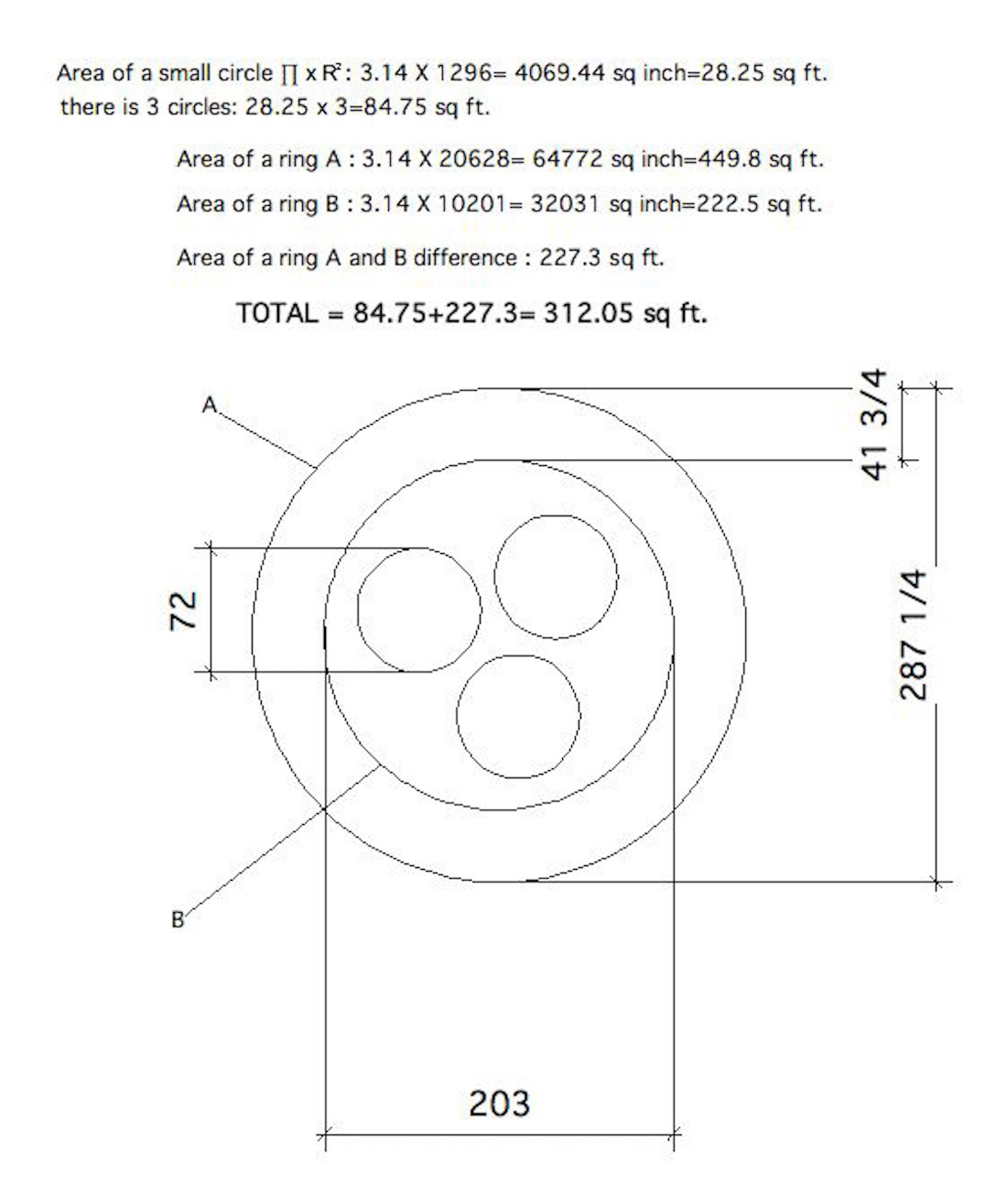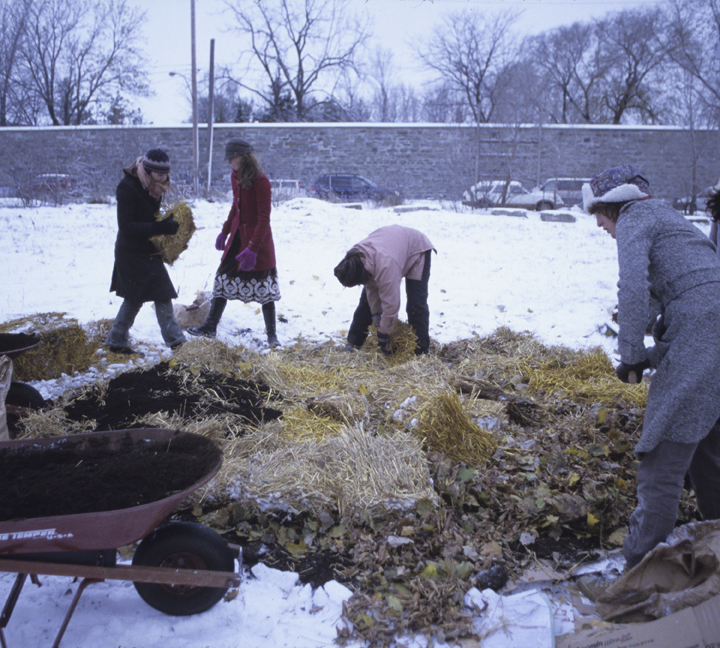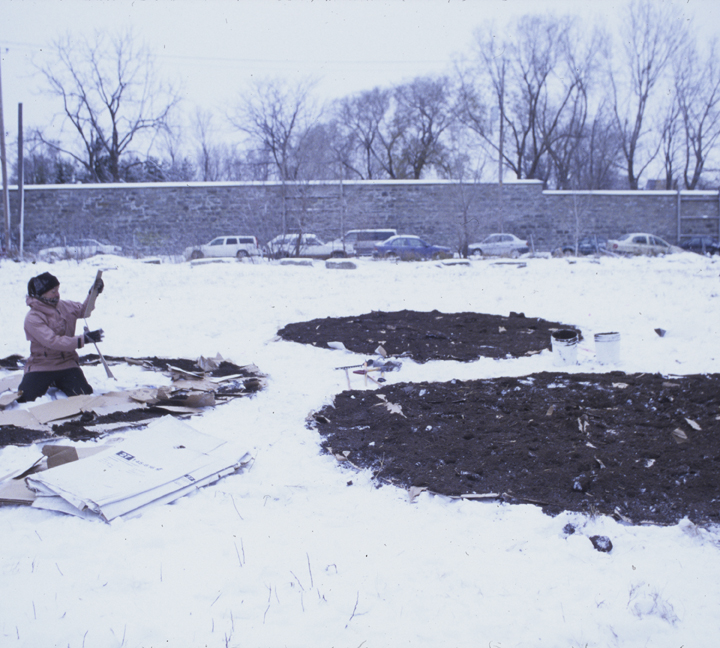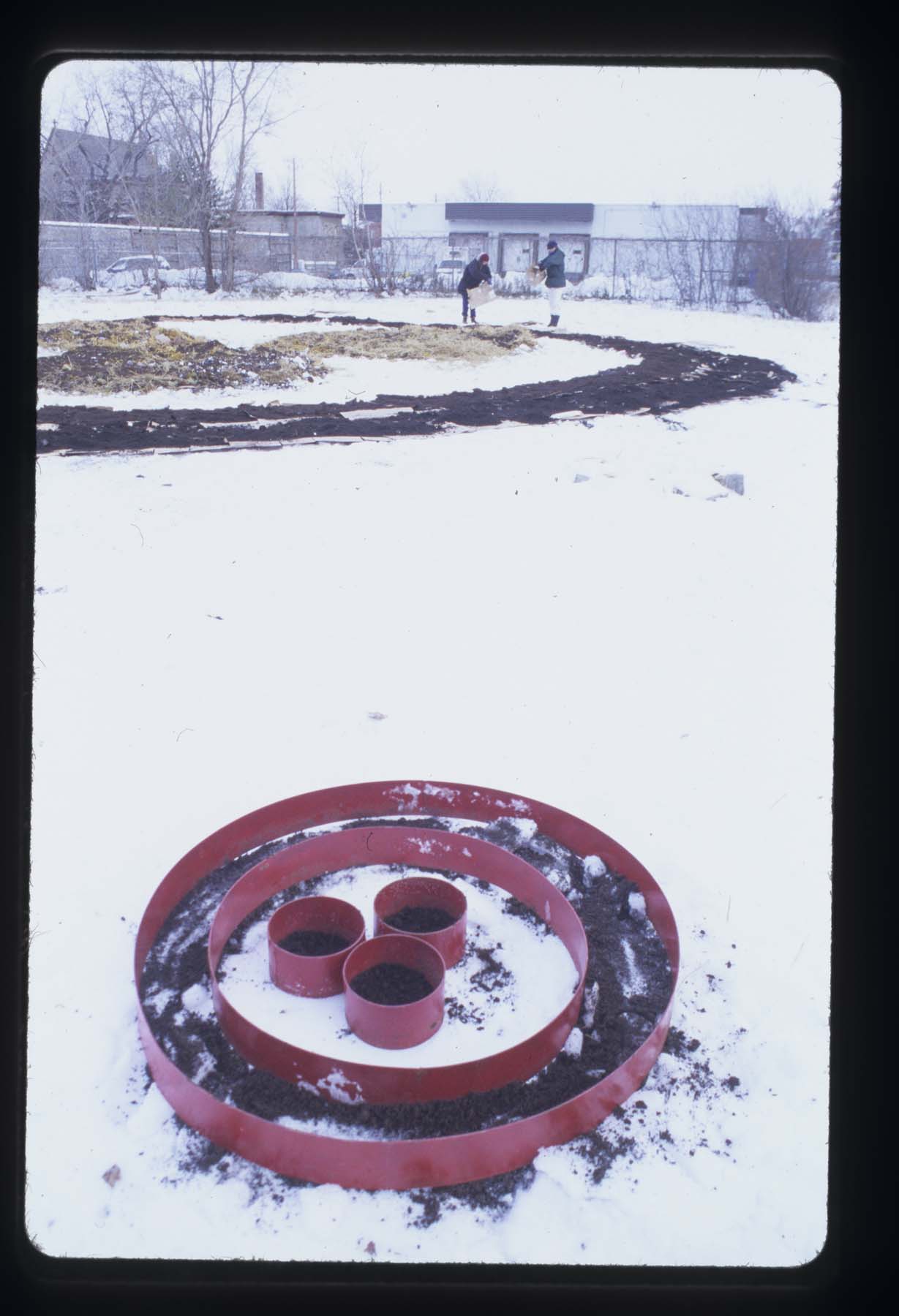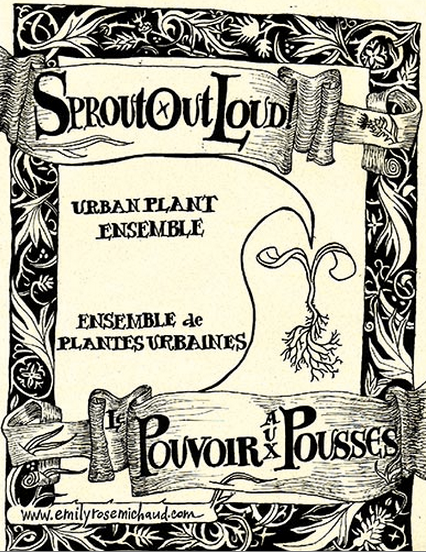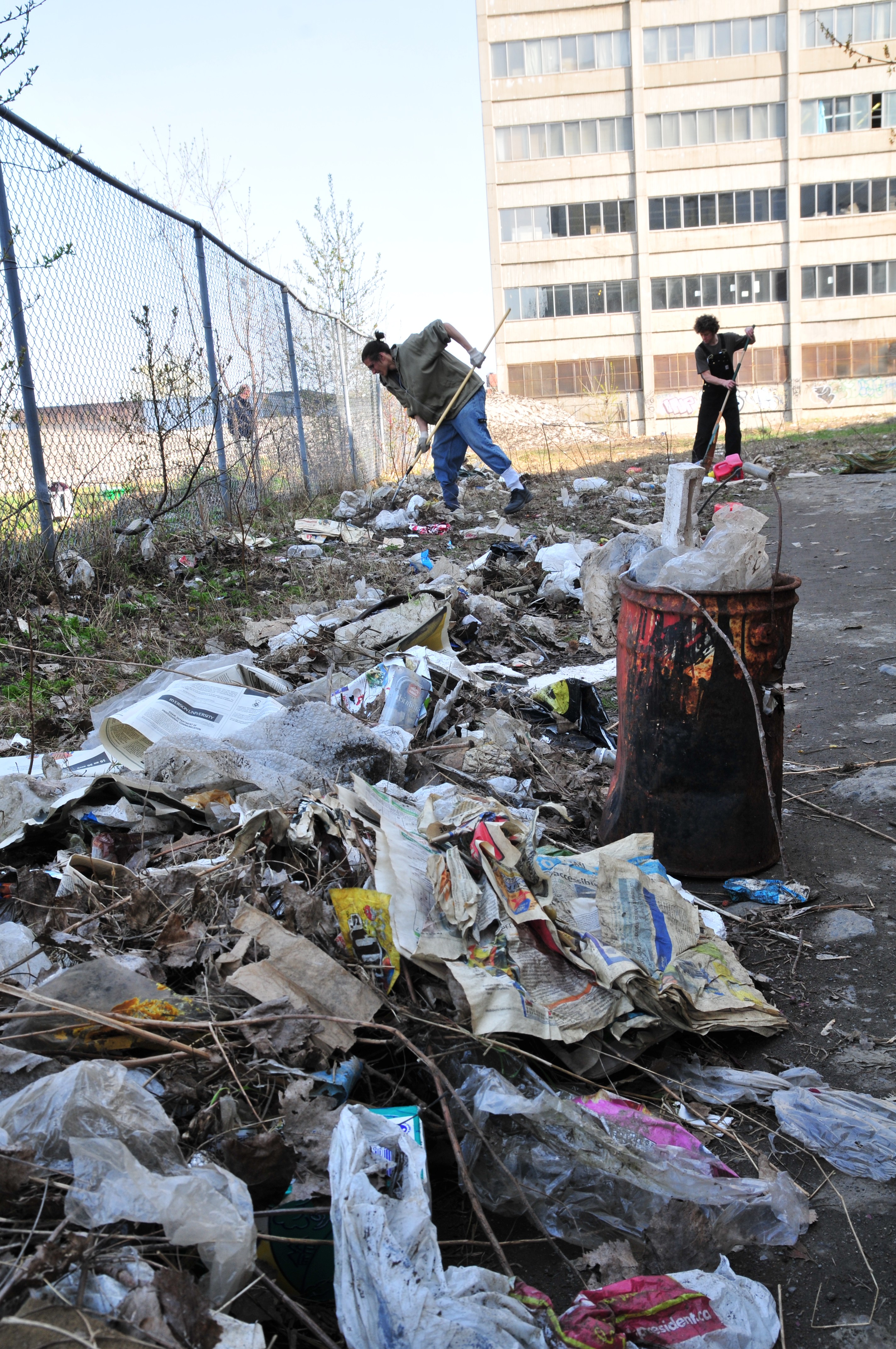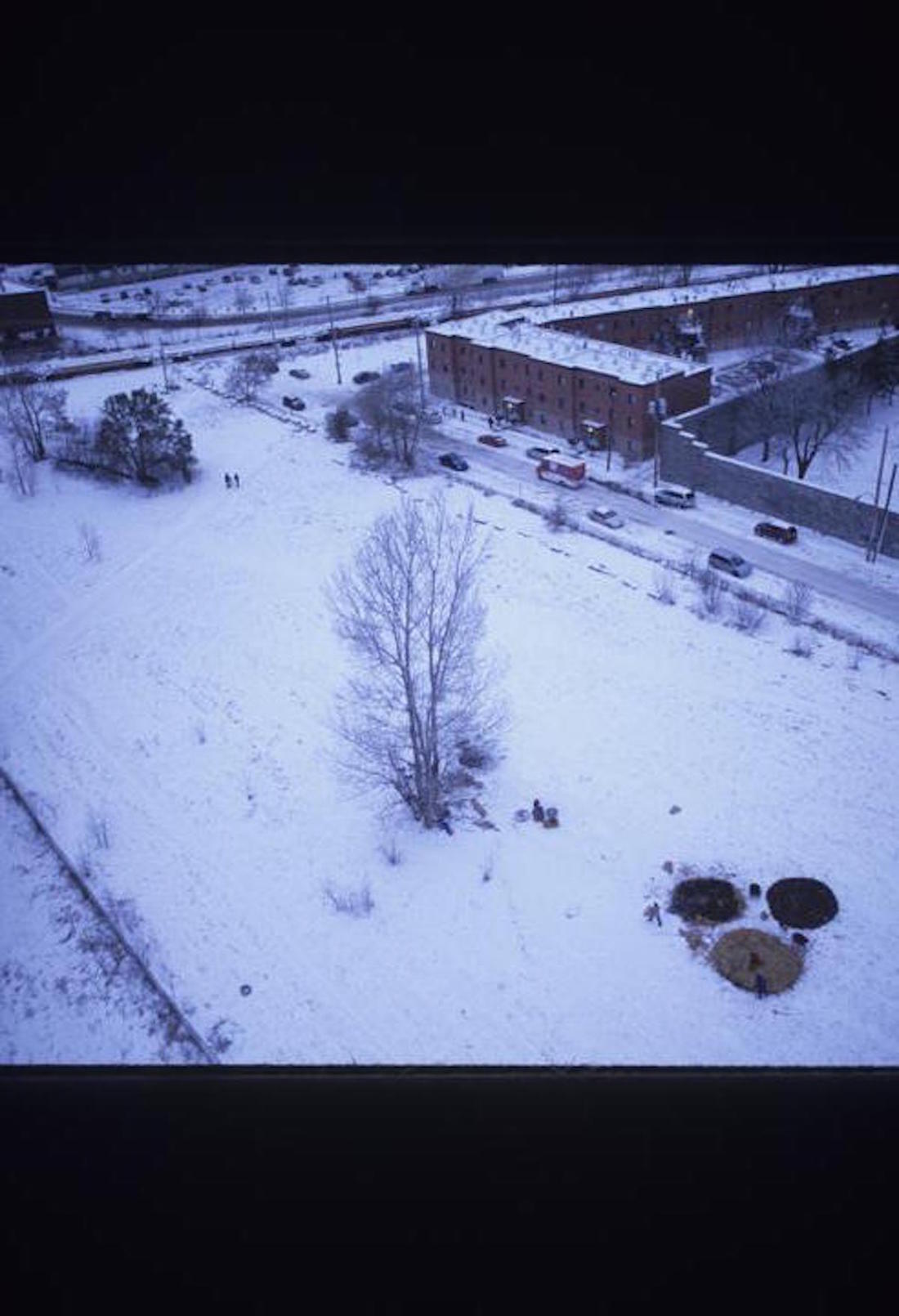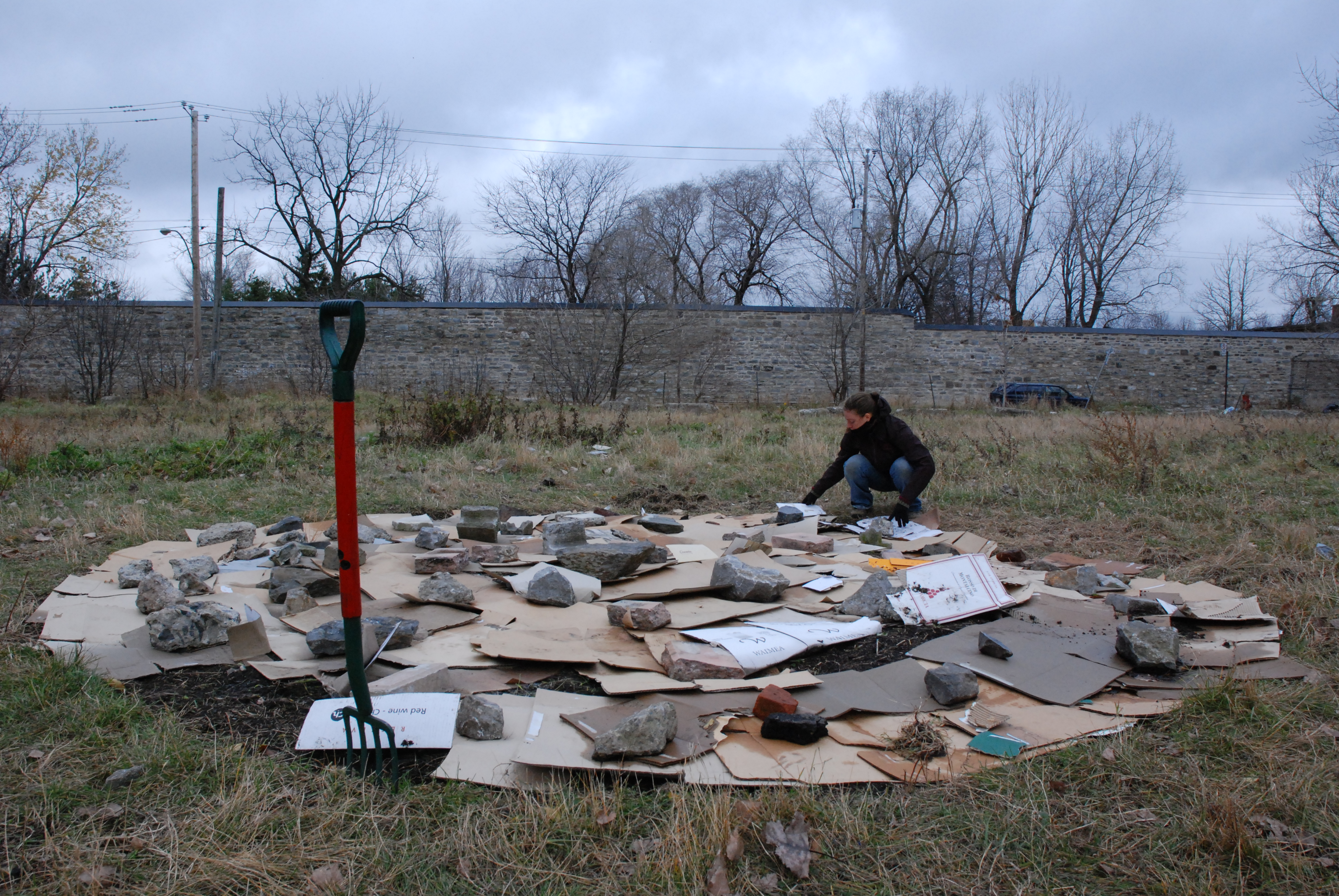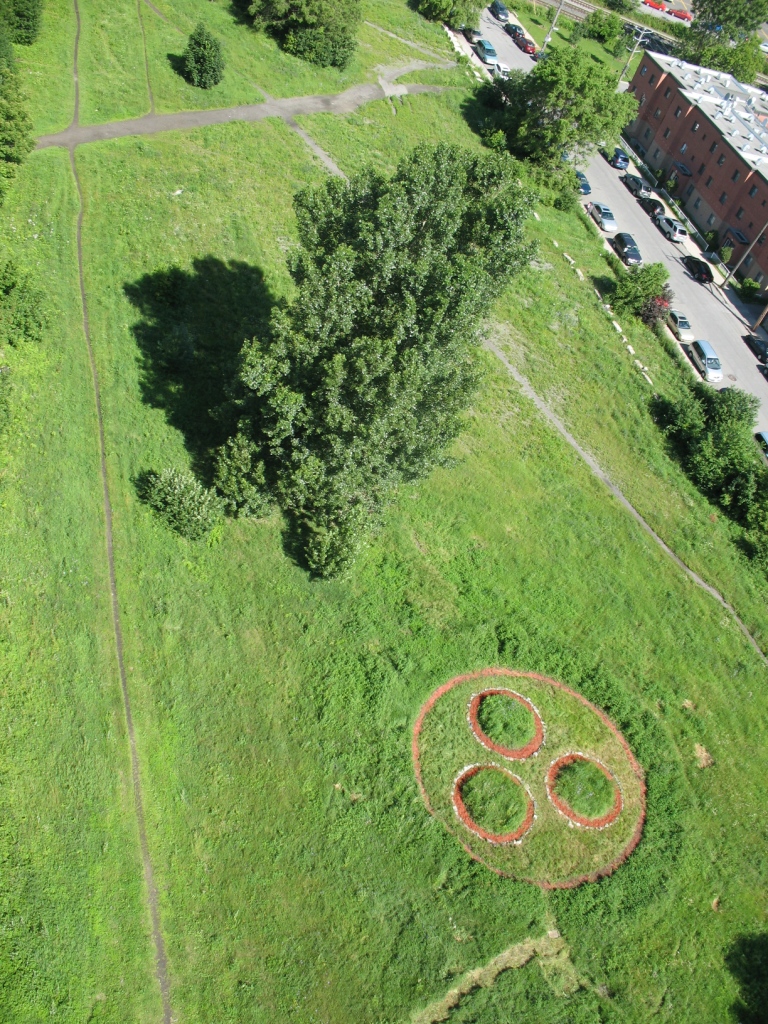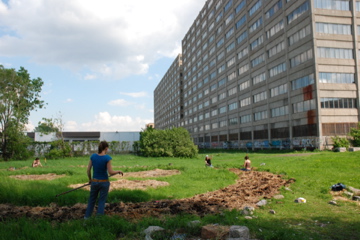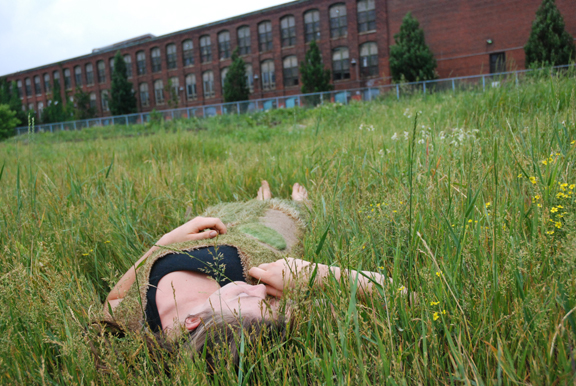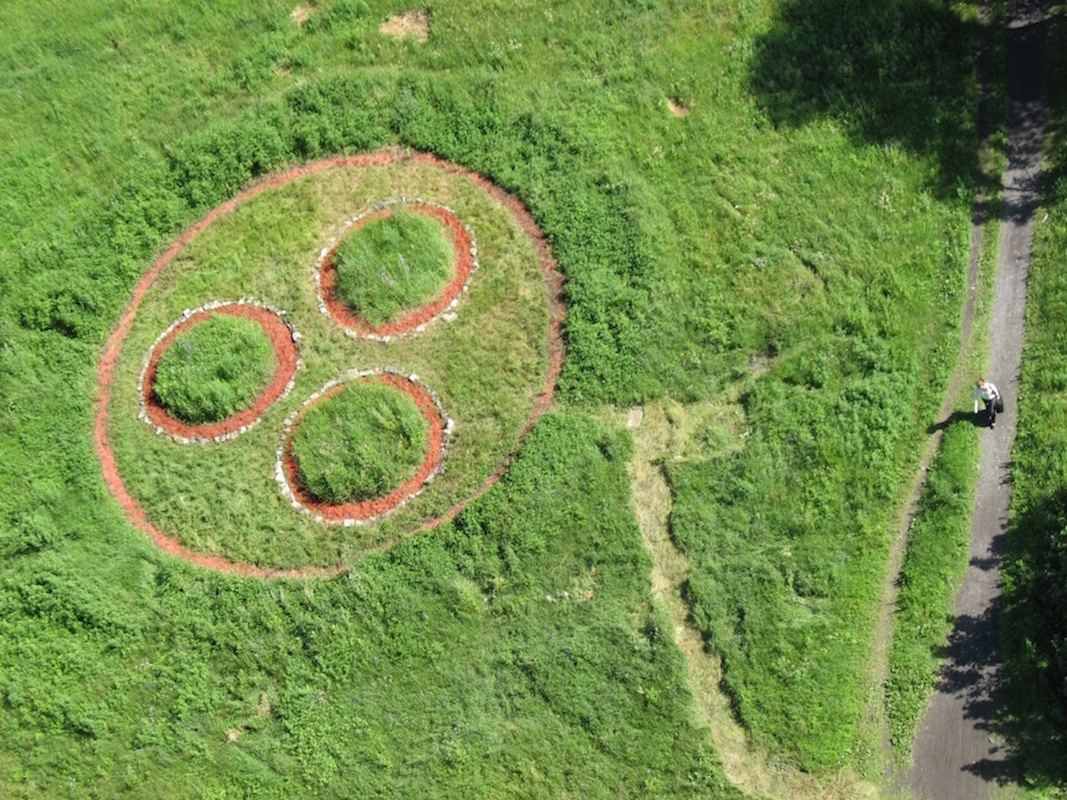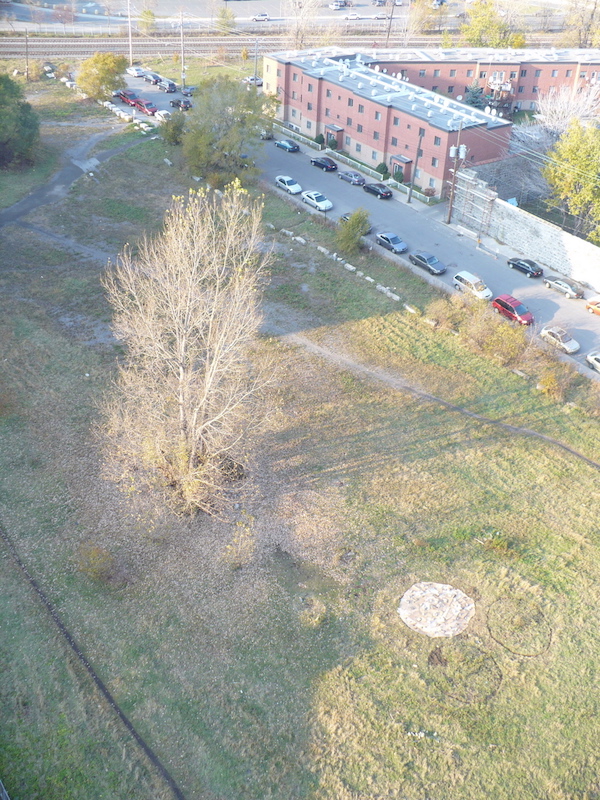Multi-year land art project, in abandoned railyard, Montreal, Canada, 2007-2011.
The Roerich Garden Project, a collaborative landscape-scale artwork was created in 2007 to provoke dialogue about the future of lot #2334609 — known locally as the Maguire Meadow or simply le champ — one of the last undeveloped spaces in Montreal’s Mile End. The project documented community uses of the meadow and explored concepts of public space, citizen participation, and the open city.
The Roerich symbol was originally used to prevent aerial bombing during WWII in Europe, and was internationally recognized to protect monuments of historical, scientific and cultural importance. Culturally equivalent to the Red Cross sign, this symbol was painted on the rooftops of museums, churches and universities. The garden in lot #2334609 was a 312-square foot living Roerich symbol made up of plants, rocks, and mulch, and was maintained year-round over a period of three years by Sprout Out Loud! — a gardener’s ensemble borne from the project — with the help of neighbours and friends in order to support and develop the relationship between residents and the land around them. The project sought to stimulate citizen engagement and highlight the importance of the commons through workshops, community events and presentations to: i-draw attention to the city’s plans and provoke dialogue about how the space was to be developed ii- engage with the meadow creatively and document how people used and cared about the space (via an electronic book with Artefatica) iii-reclaim the commons, activate unused urban spaces, re-enchant the public with the natural world and living systems of the urban core iv-empower people and invite others to plant similar ideas in their own environments where needed.
The Roerich Garden Project and the activities surrounding were documented online through a growing collection of more than 40 texts and 1000 images, all distributed under a Creative Commons license. Visit Artefatica’s image gallery to explore and learn more.
The project’s efforts sparked change: Citizens gathered, defined their priorities and dreams, and the city’s $9-million “development” plan went under closer community scrutiny. The nonprofit, Les Amis du Champ des Possibles (Friends of the Field of Possibilities), was created to preserve the field and to raise awareness about the cultural, ecological, and social importance of wild urban spaces. Provoking critical reflection on the relationship between humans and urban biodiversity, this non-profit society is now a driving force behind a new way of relating to wild urban spaces.
